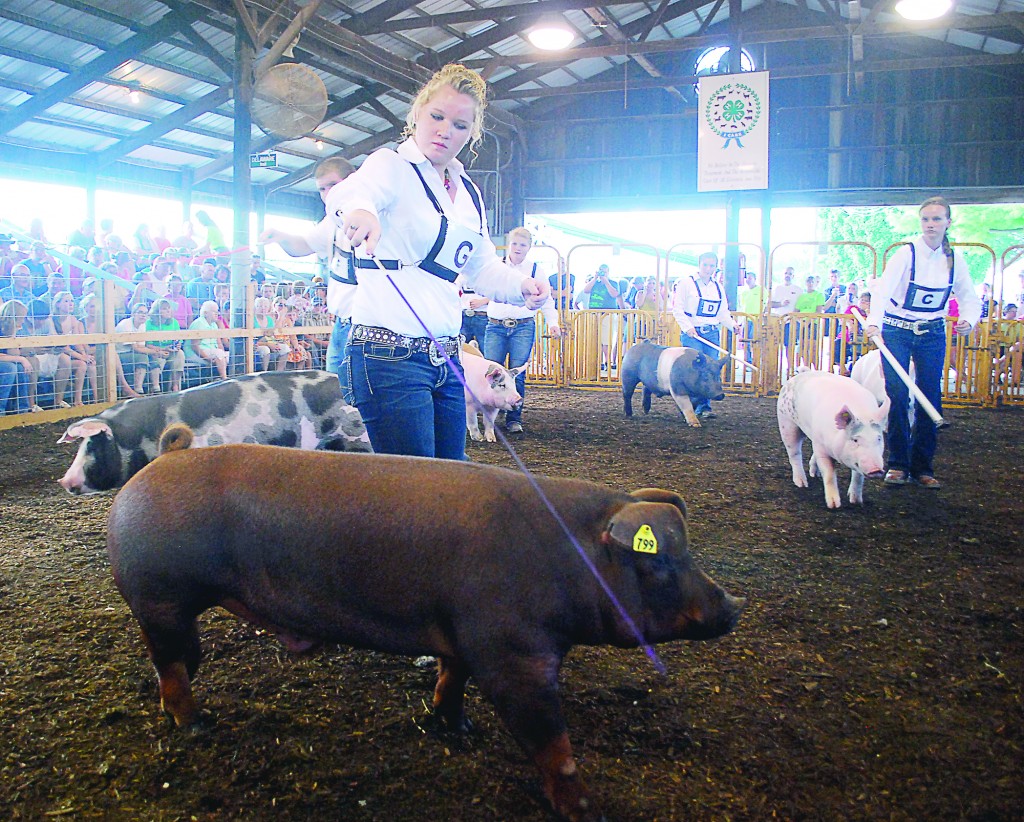
According to the Indiana Board of Animal Health, 29 pigs from the Grant and Hancock counties fairs have tested positive for variant influenza A (H3N2v), causing 12 human cases of swine flu as of July 3. To ensure the safety of Hamilton County 4-H Fair patrons, organizers are taking extra precautions – “over and above what the Indiana Board of Animal Health have recommended” according to Bill Rice, Hamilton County ag and natural resources extension educator.
“We understand a lot of people want to see the animals but we’re just trying to think of their safety,” he said. “We’re discussing asking the public not to enter the (swine) barn. This is all part of public health safety to protect them.”
Patrons should know that you can’t get swine flu from eating pork products. It’s a respiratory virus that’s passed the same way any other flu is spread, through droplet infection. Since there is no vaccine available for people to protect against this virus, the best way to prevent infection is to avoid sources of exposure to the virus.
Rice said animal move-in day is July 17, before the start of the 4-H fair on July 18, but this year all swine will not be allowed on the fairgrounds until July 19. The incubation time is estimated at 72 hours and IBAH officials say the shorter amount of contact hogs have together the less likely the influenza A will pass from animal to animal. Rice added that like all animals, swine will be subjected to a check from a veterinarian before being allowed in the barn.

“Those animals not going to the livestock auction will leave Monday morning,” he said.
Unlike many counties, Rice said Hamilton County is requiring that their swine have two doses of the influenza A vaccination – with the last dose administered before June 30.
“We’ll have a signed, notarized affidavit to that affect,” he said. “With the 72-hour period and vaccination protocol, we’ve certainly minimized the risk,”
In addition to an increased number of hand sanitizer stations at barn entrances and across the fairgrounds, Rice also suggests that parents with young children carry them when walking through barns.
“They are at the same level of the animals breathing and try to touch them,” he said.
Emily Peterson and her sister, Jenna, have two hogs each. Both are aware of the rule changes this year.
“I think the shots are a good thing because it prevents the disease in the barn,” Emily said. “People come to the fair to see the animals.”
Both girls said the biggest change will be the care of their animals. Since both show more than one species, move-in day is usually a long one as they prepare the temporary living quarters for their animals. This year, they will have to go through the process twice and care for their swine at home as their animals are at the fair.
“We usually stay at the fair until 10:30 or 11 o’clock,” Jenna said, adding she’ll have to wake up earlier and leave the fair earlier when her hogs are not at the fairgrounds.
Variant influenza A H3N2v was identified in Indiana last year, with a total of 138 cases in 2012.


